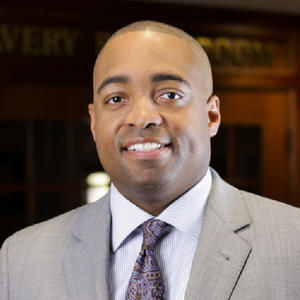
Budget & Tax , Education
Jonathan Small | May 31, 2023
Will education funding produce results?
Jonathan Small
Public-school advocates have long suggested that if Oklahoma schools had more money, then student outcomes would increase as well. That theory is being put to the test.
When they announced this year’s education-funding plan, policymakers noted that state school appropriations rose by $1.35 billion from 1993 to 2018. In contrast, under this year’s agreement, state school appropriations will have increased by $1.37 billion from 2019 to 2024.
In other words, state school spending will have increased more in the last five years than in the 25 years prior to 2019. Will we see a commensurate increase in academic performance?
Data from the Oklahoma Cost Accounting System showed public-school district expenditures in 2022 totaled $9,058,129,282 when student enrollment was 698,577, creating a per-pupil spending average of $12,967.
The Oklahoma State School Boards Association now acknowledges that the new education-funding plan will boost per-pupil funding in public schools by, roughly, another $1,000. That will raise average per-pupil funding to nearly $14,000 per child. And the true figure will likely be greater after accounting for increased local property tax funding.
That’s a public-school per-pupil funding level that significantly exceeds the average private-school tuition rate in Oklahoma.
For several years now, public-school lobbyists have complained that education does not have an eight-year funding plan comparable to the funding plan for state roads and bridges. But this year’s budget agreement shows lawmakers, for all intents and purposes, have provided the funding increases advocates wanted.
The question now is whether the increased spending will produce increased outcomes the same way greater road funding produced measurable results.
Oklahoma ranked 49th in 2004 in the number of structurally deficient bridges on the state highway system but was among the 10 best states by 2020. Thanks to Oklahoma’s road-funding plan, the number of structurally deficient state-highway bridges plunged from nearly 1,200 to just 86 during that time.
The road plan relies primarily on private vendors. There are also financial penalties for poor performance. Notably, this year’s education plan takes a page from the road plan by better harnessing market forces through the provision of a refundable tax credit to help families pay for private school, but poor performance still does not result in direct financial penalties for public schools.
In 2012, then-Tahlequah Public Schools Superintendent Lisa Presley declared to the local paper that “there has never been enough revenue for public education, and there never will be.”
Today, no one can credibly argue poor outcomes in Oklahoma schools are due to underfunding. Yet it should not escape notice that as spending has increased in recent years outcomes have actually declined.
Will Oklahoma turn the corner with this year’s plan and improve student learning? If not, public-school advocates will need to get a new set of talking points.

Jonathan Small
President
Jonathan Small, C.P.A., serves as President and joined the staff in December of 2010. Previously, Jonathan served as a budget analyst for the Oklahoma Office of State Finance, as a fiscal policy analyst and research analyst for the Oklahoma House of Representatives, and as director of government affairs for the Oklahoma Insurance Department. Small’s work includes co-authoring “Economics 101” with Dr. Arthur Laffer and Dr. Wayne Winegarden, and his policy expertise has been referenced by The Oklahoman, the Tulsa World, National Review, the L.A. Times, The Hill, the Wall Street Journal and the Huffington Post. His weekly column “Free Market Friday” is published by the Journal Record and syndicated in 27 markets. A recipient of the American Legislative Exchange Council’s prestigious Private Sector Member of the Year award, Small is nationally recognized for his work to promote free markets, limited government and innovative public policy reforms. Jonathan holds a B.A. in Accounting from the University of Central Oklahoma and is a Certified Public Accountant.